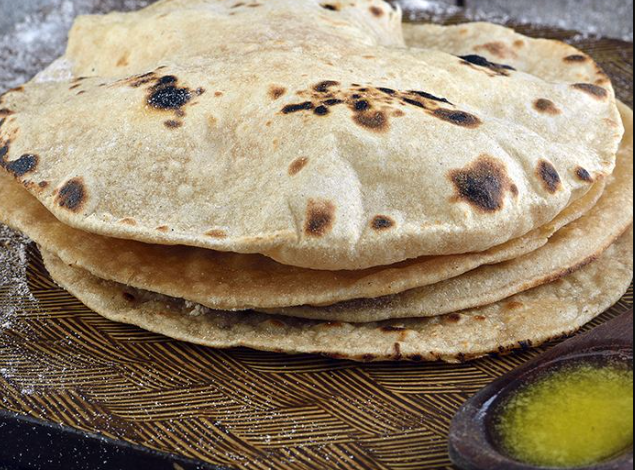Should Ghee Be Used On Chapati? Is It Beneficial?

Many of us enjoy eating chapati or roti with a dab of clarified butter or ghee. In addition to softening the rotis, it also keeps it from becoming dry and flaky. But do experts advise ghee to be added to rotis?
Ghee application to chapatis is practiced in many Indian homes, particularly in the north, almost ritualistically. Now, this in no way suggests that you start slathering your chapattis in ghee. Ghee, however, has amazing health benefits when consumed in moderation. When we are trying to lose weight, we frequently consider eliminating all ghee from our diets. But it shouldn’t be that way.
Here are several reasons why ghee aids in weight loss.
- The glycemic index of chapati is lowered by ghee. For foods containing carbs, there is a rating system called the glycemic index (GI). It demonstrates how rapidly ingesting various foods alters your blood sugar (glucose) level.
- Ghee makes you feel more satisfied. You won’t need to later in the day indulge on more fattening meals.
- Ghee contains fat-soluble vitamins that help people lose weight. Ghee is essential for maintaining good cholesterol levels and hormone balance.
- Due to its high heat point, ghee doesn’t generate free radicals that can harm cell function.
How much ghee is sufficient?
Brush some ghee on your chapati if you want to. However, be careful not to overdo it on the quantity. For one roti, a little teaspoon works just well. Overdoing anything is bad for the body.
Ghee must be used when cooking and must be added to dals, rice, bhakri, bhatis, and chapatis. Essential fatty acids are present, and it facilitates the absorption of vitamin D, A, and E. Additionally, it improves taste.
According to nutritionist and food coach Anupama Menon, ghee can be consumed first thing in the morning or even mixed with rotis or rice. It can be used in cooking because it has a high smoking point and gives dals and desserts a distinctive flavor. Most of it is reasonably priced, yet it transmits an incredible level of luxurious taste. But ghee is frequently avoided because we believe it to be high in calories, which it is, but so are the other cooking oils. Although it is a beneficial addition to the fats consumed on a daily basis, it must be used properly and in moderation.
Since it is lactose-free, lactose-intolerant people frequently choose it as their preferred source of fat.
News Mania Desk






